Abstract
The behavioral effects of d-amphetamine have been shown to be modulated by stimulus control, with less impairment of performance occurring when control is great. When the fixed-consecutive-number schedule is used (on which at least a specified consecutive number of responses must be made on one operandum before a single response on another will produce a reinforcer), response rate tends to be invariant but reinforcement frequency is not. This study asks whether the differences in reinforcement frequency that usually accompany changes in stimulus control could themselves be responsible for the performance differences. Two versions of the fixed-consecutive-number schedule of reinforcement were combined into a multiple schedule within which stimulus control was varied but differences in reinforcement frequency were minimized by omitting some reinforcer deliveries during the component that usually had the higher reinforcement frequency. In one component, a compound discriminative stimulus was added with the eighth consecutive response on the first lever; a single response on the second lever was then reinforced. In the other component, no such stimulus was presented. With no added stimulus, large decreases occurred in the number of runs satisfying the minimum requirement for reinforcement at doses of drug that produced only minimal changes when an added stimulus controlled behavior. Thus, increased stimulus control diminishes the behavioral changes produced by d-amphetamine even when the possible contribution by baseline reinforcement rate is minimized.
Full text
PDF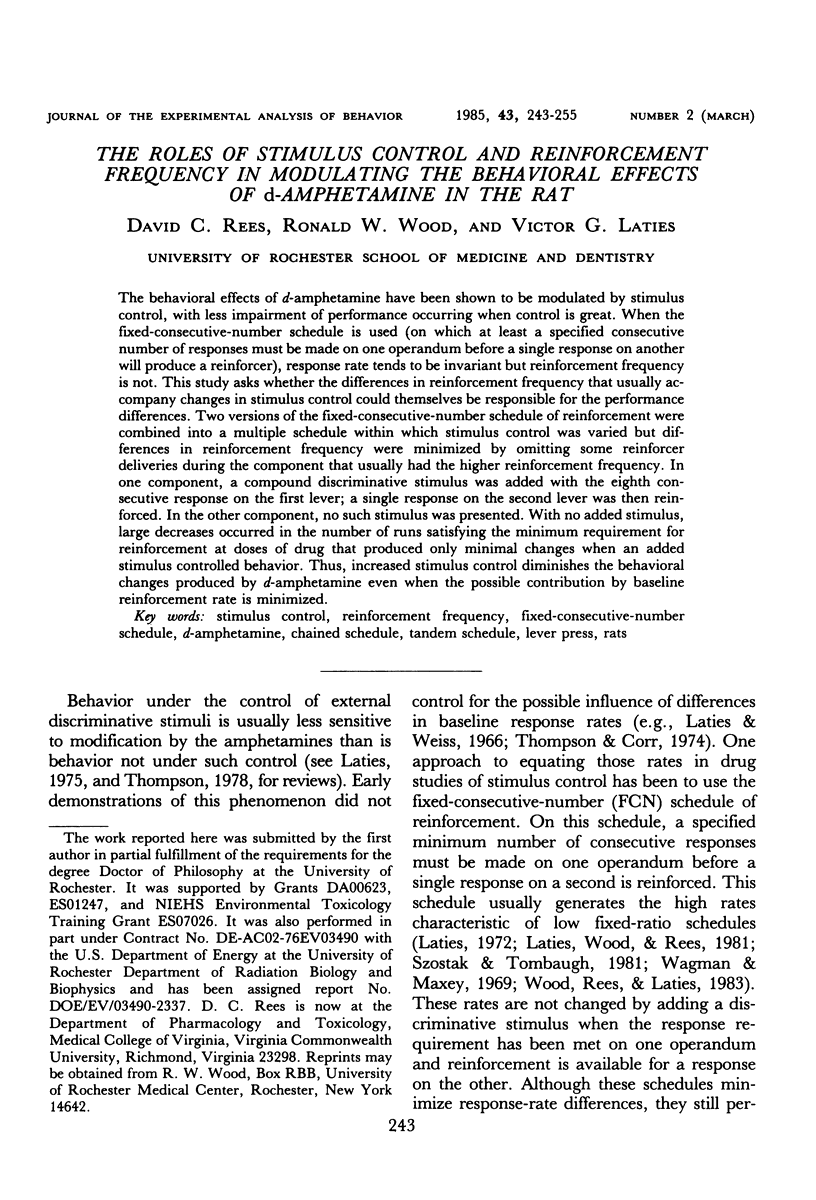
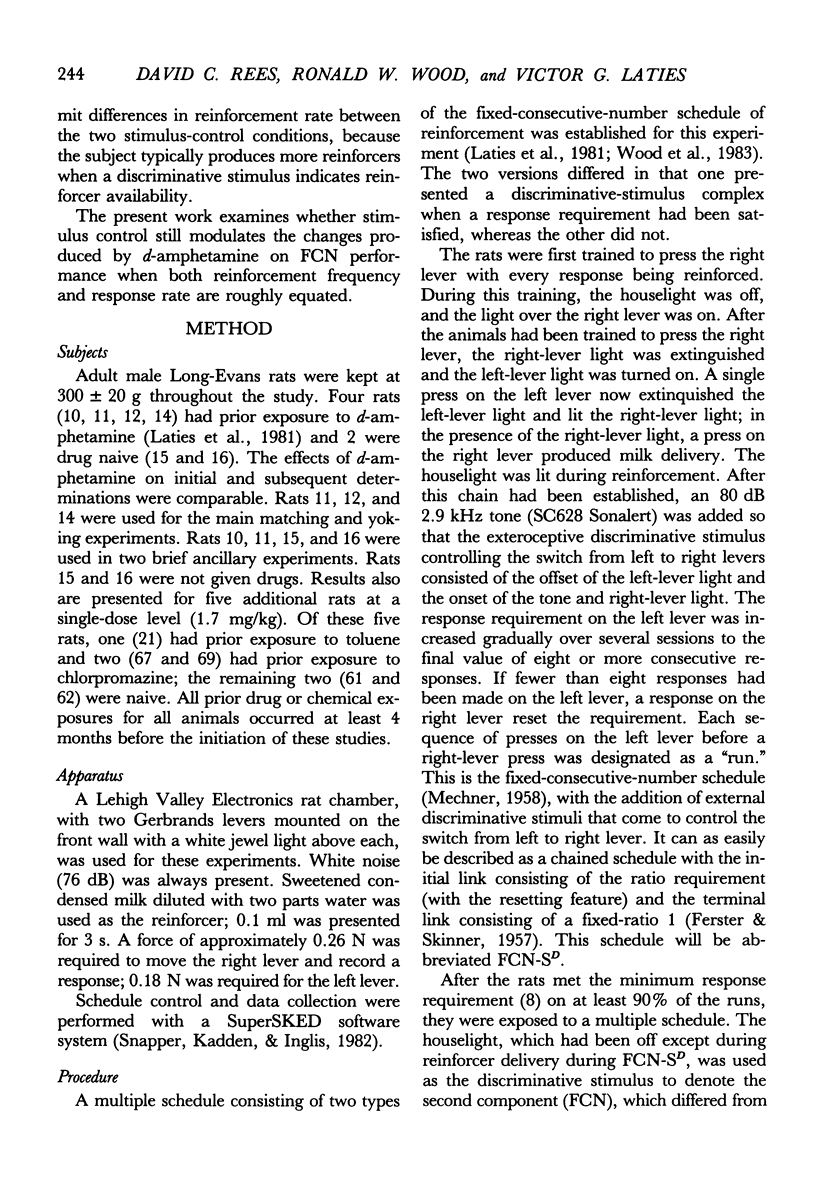
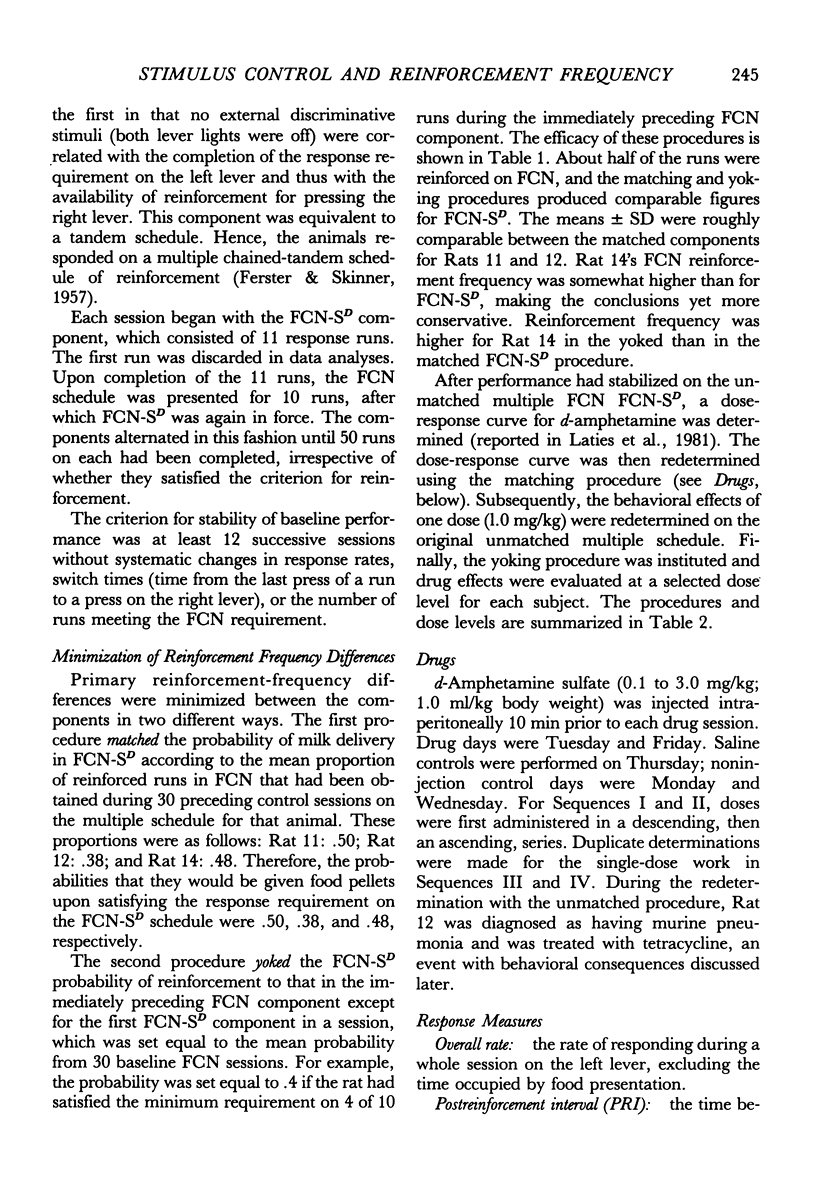
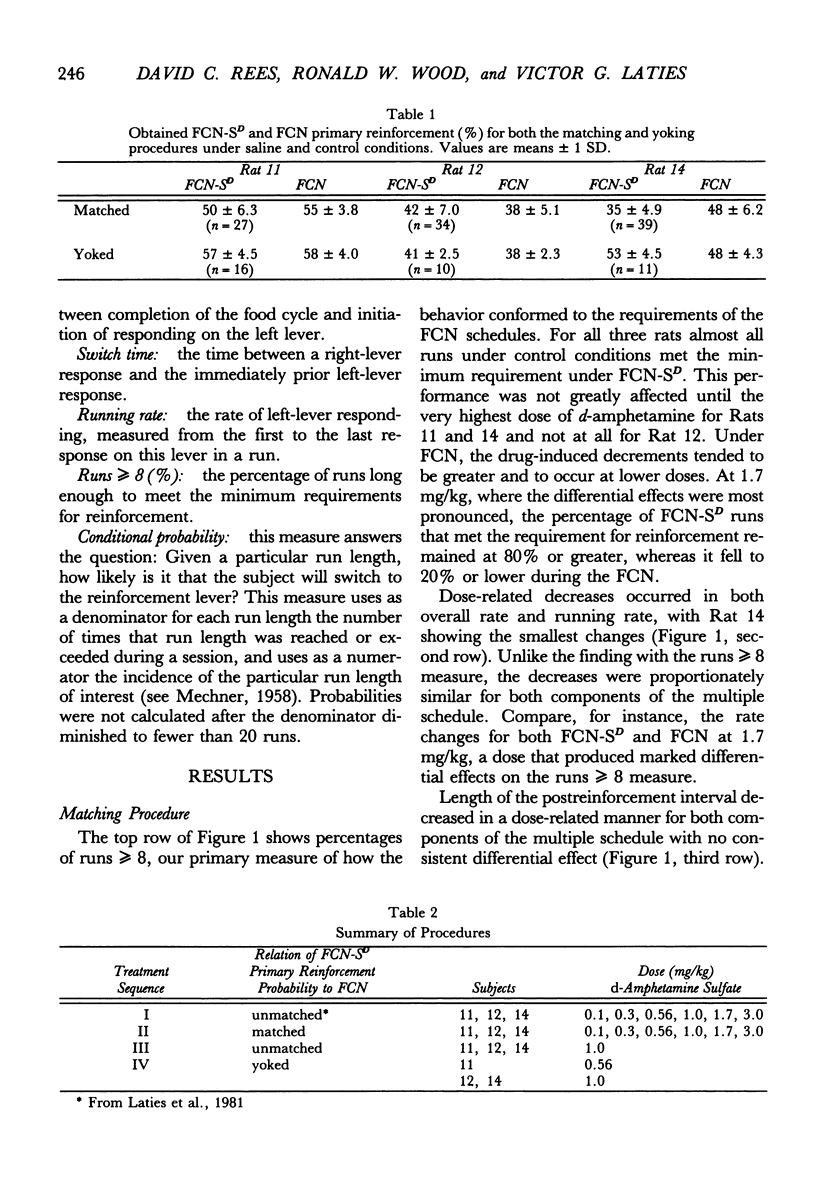
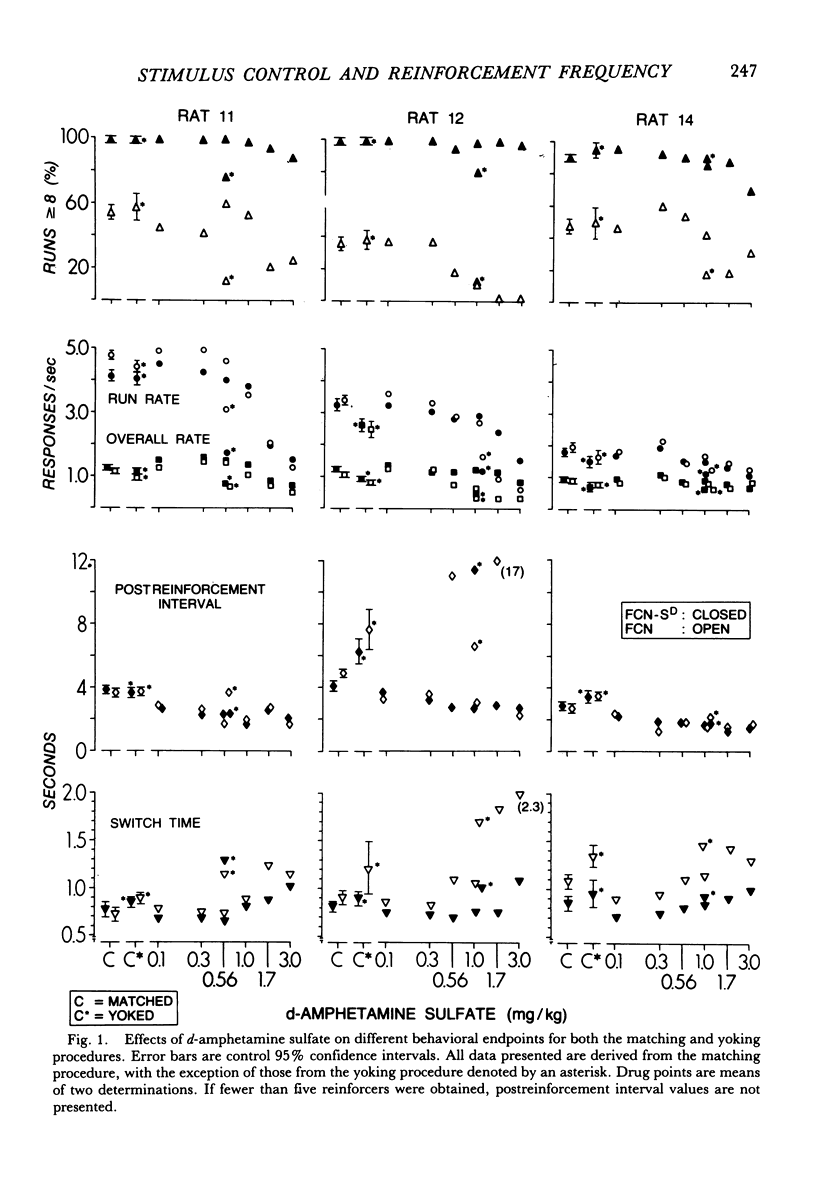
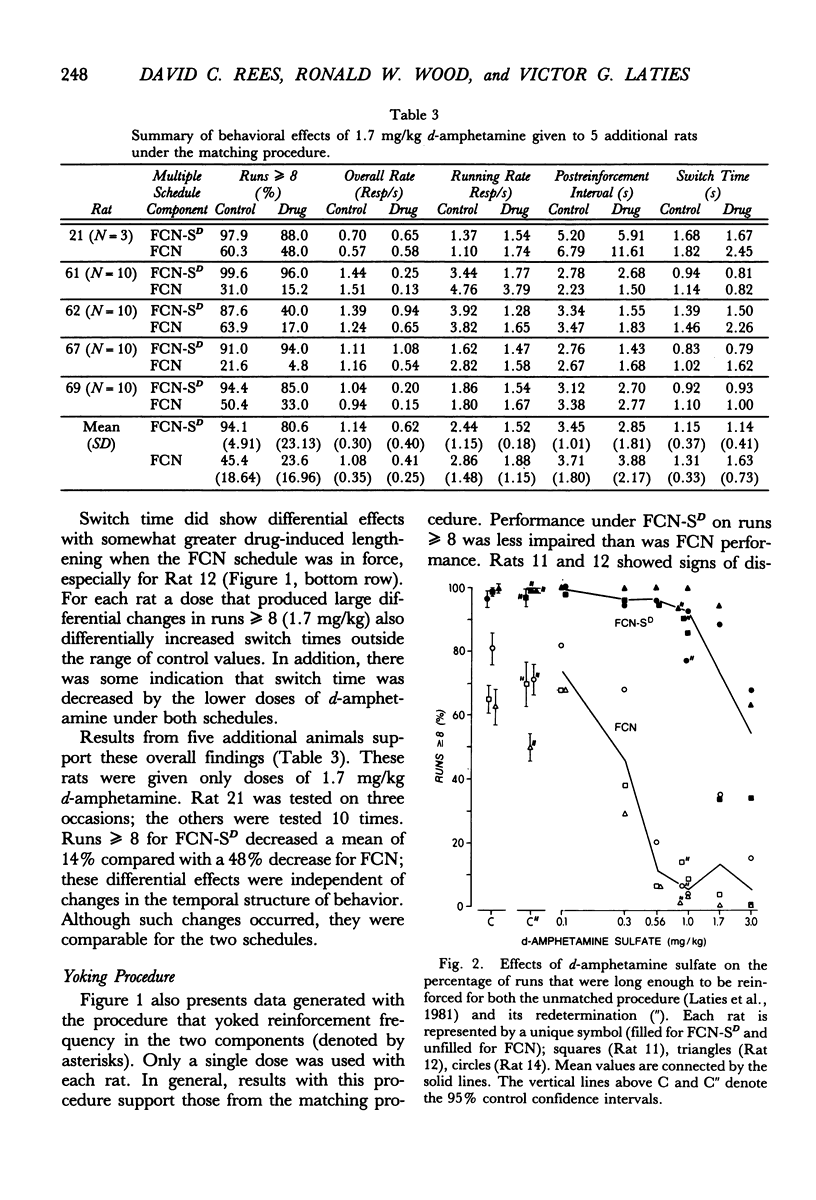
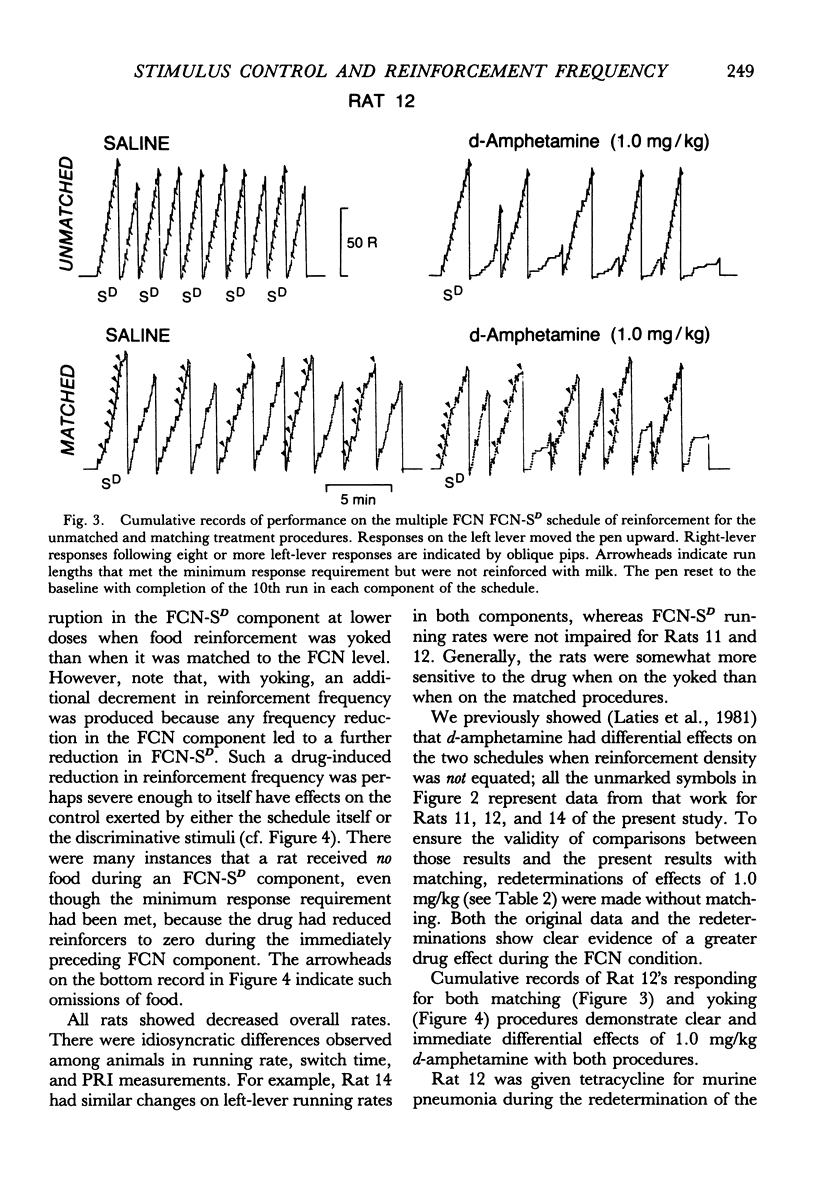
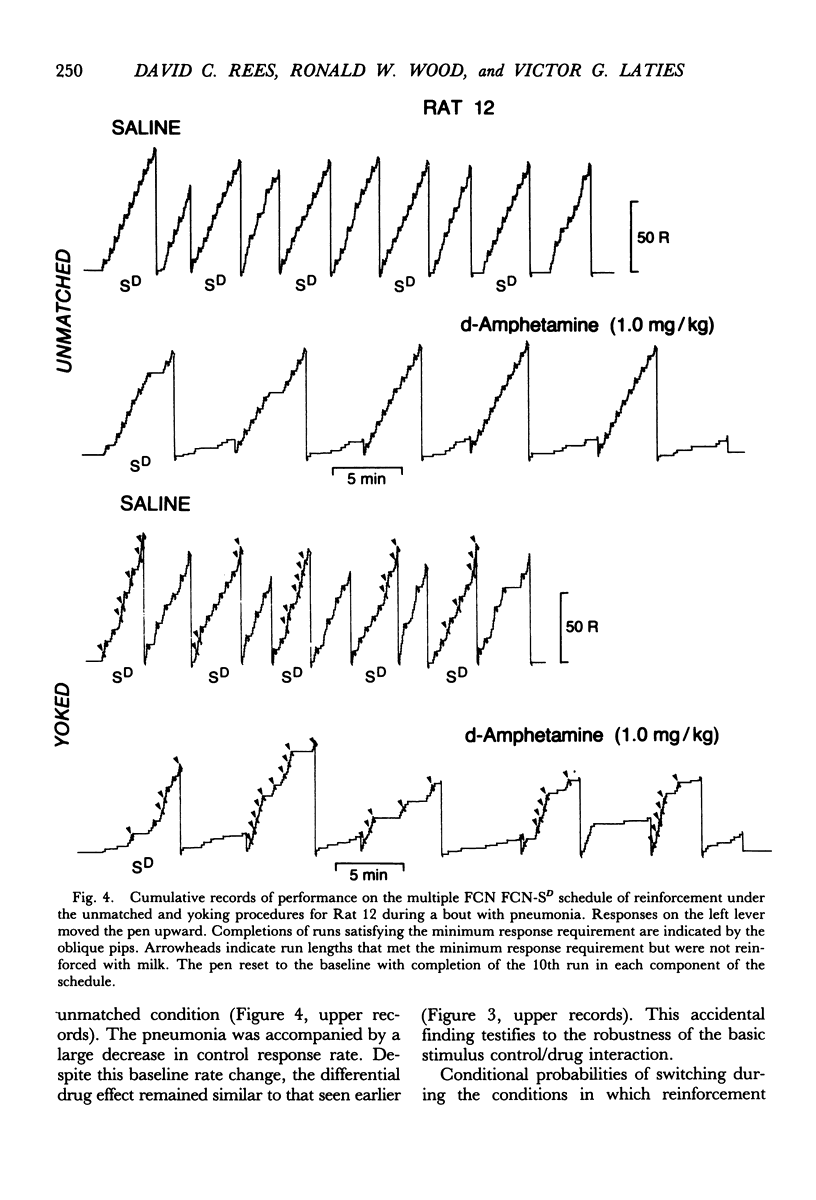
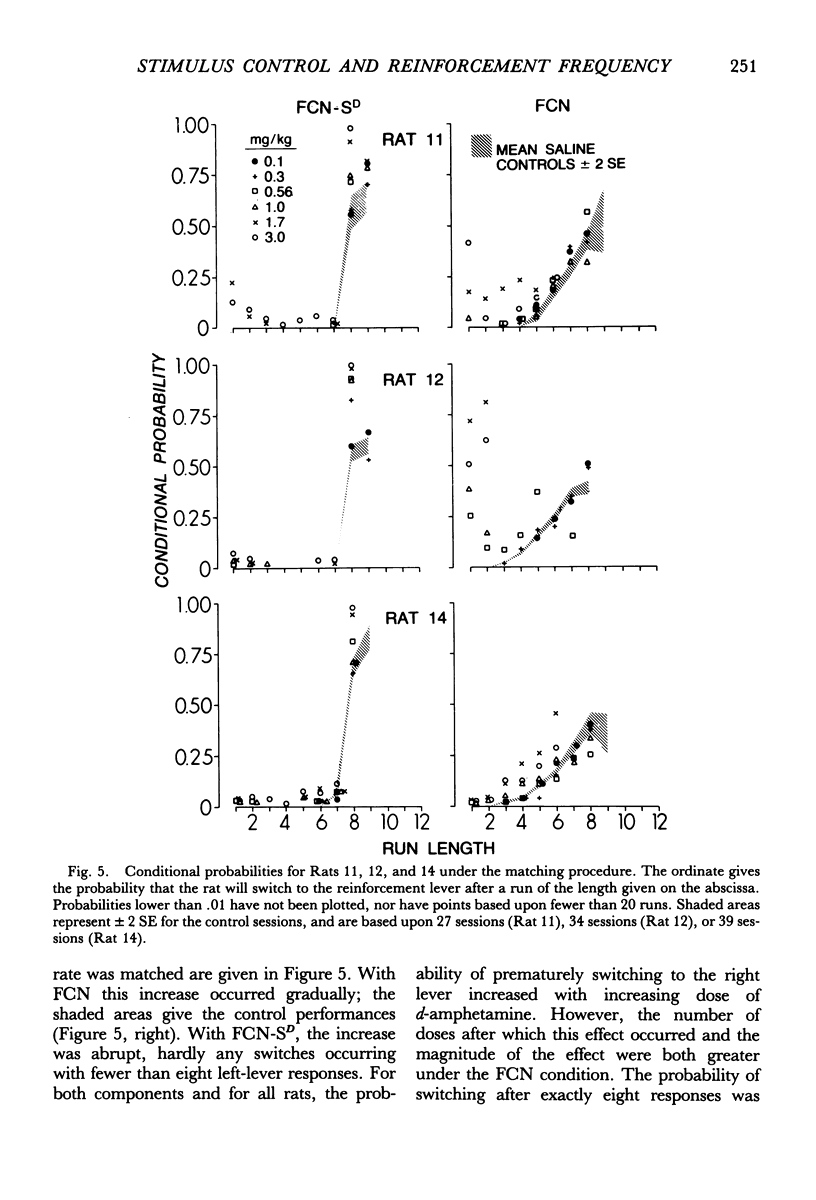
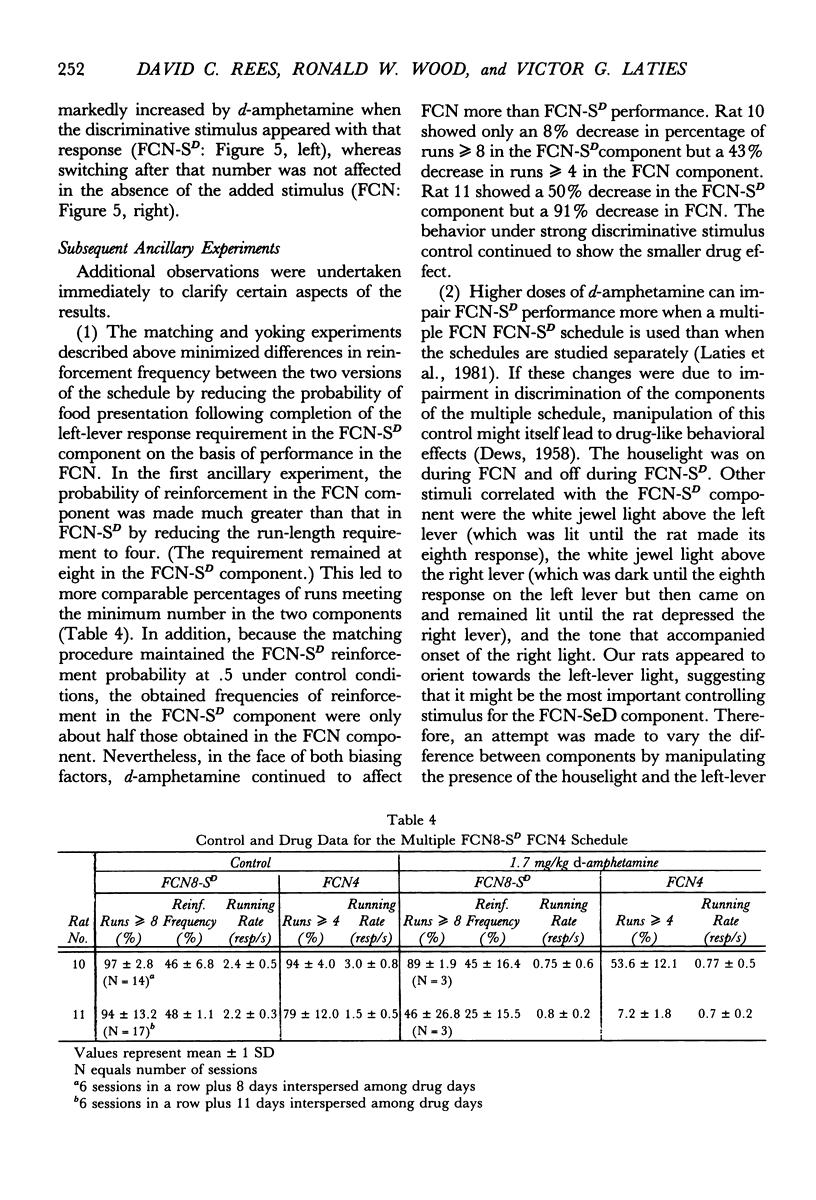
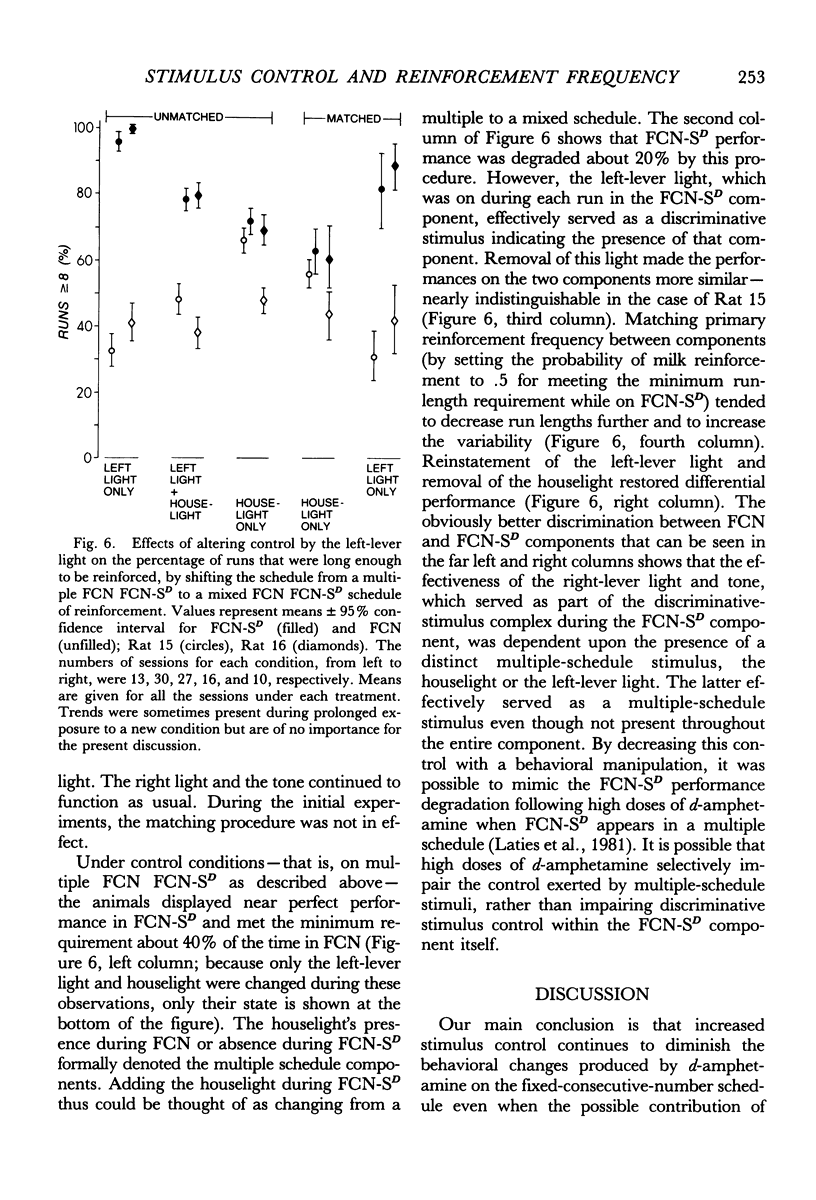
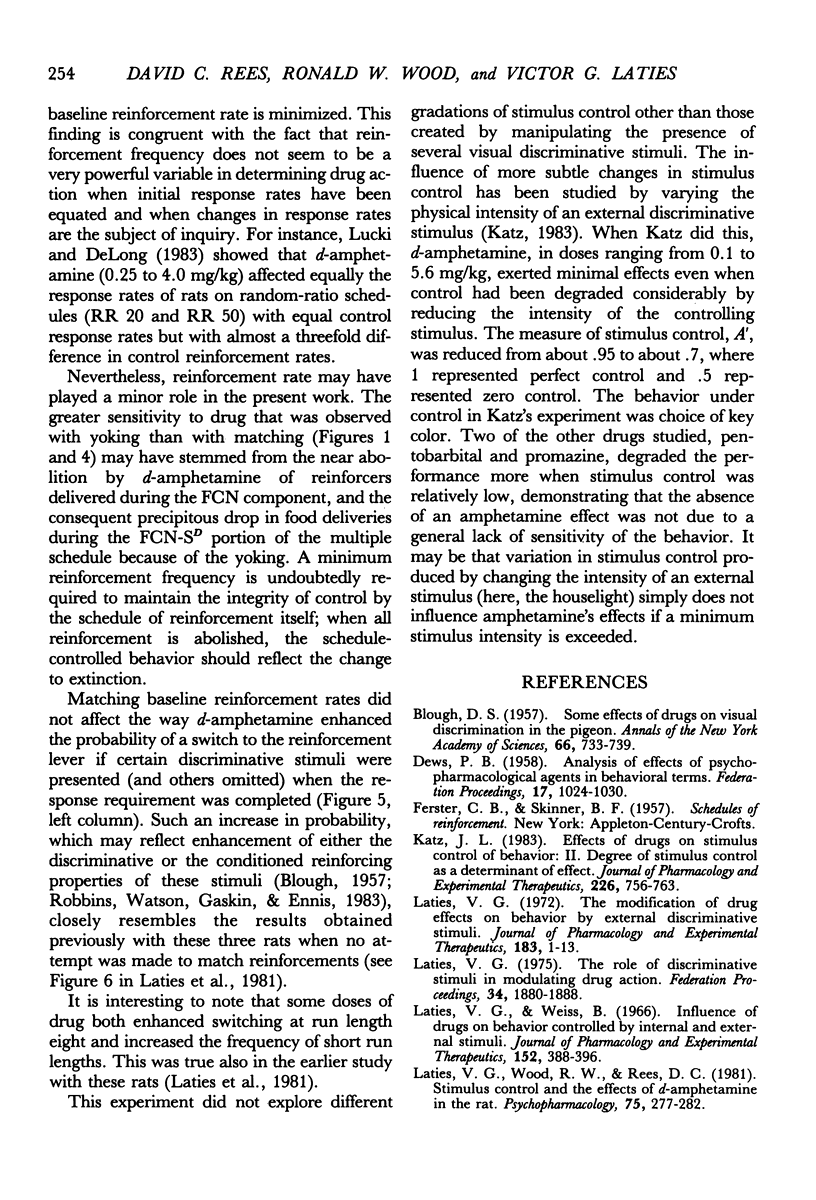
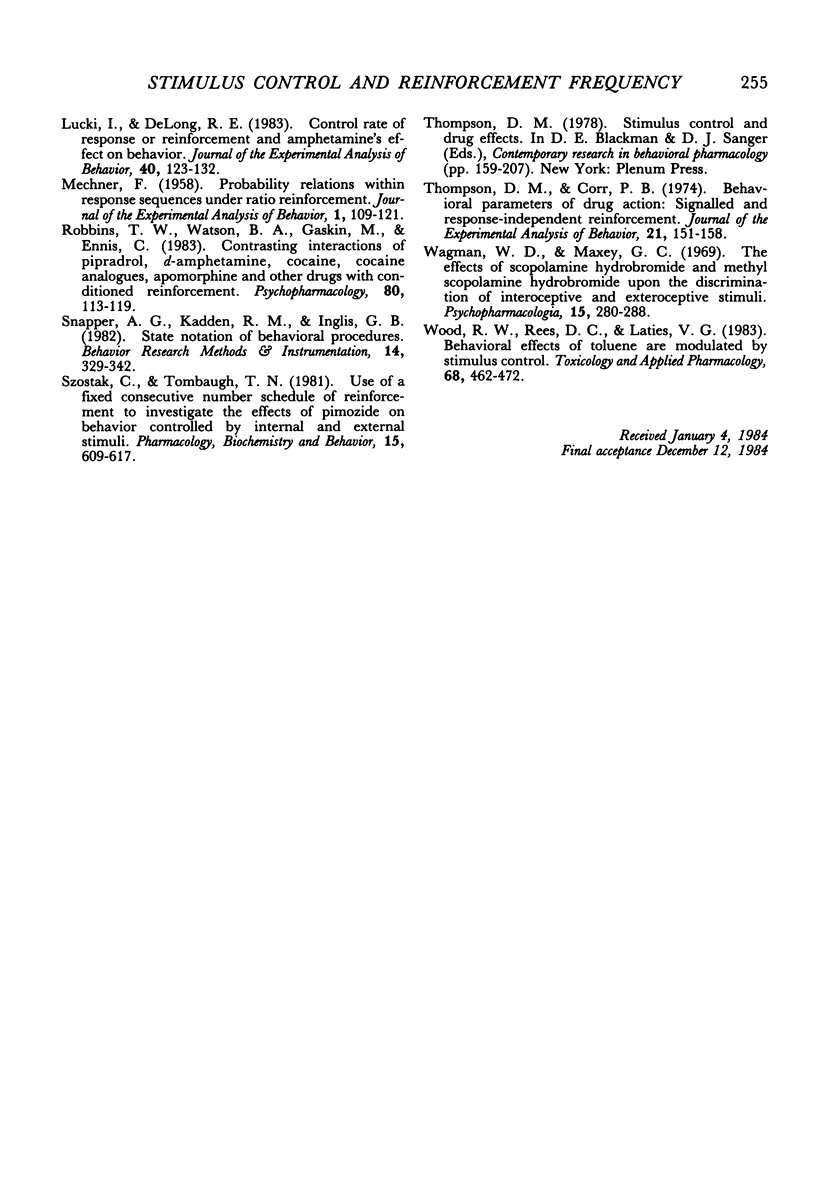
Selected References
These references are in PubMed. This may not be the complete list of references from this article.
- BLOUGH D. S. Some effects of drugs on visual discrimination in the pigeon. Ann N Y Acad Sci. 1957 Mar 14;66(3):733–739. doi: 10.1111/j.1749-6632.1957.tb40762.x. [DOI] [PubMed] [Google Scholar]
- DEWS P. B. Analysis of effects of psychopharmacological agents in behavioral terms. Fed Proc. 1958 Dec;17(4):1024–1030. [PubMed] [Google Scholar]
- Katz J. L. Effects of drugs on stimulus control of behavior. II. Degree of stimulus control as a determinant of effect. J Pharmacol Exp Ther. 1983 Sep;226(3):756–763. [PubMed] [Google Scholar]
- Laties V. G. The modification of drug effects on behavior by external discriminative stimuli. J Pharmacol Exp Ther. 1972 Oct;183(1):1–13. [PubMed] [Google Scholar]
- Laties V. G. The role of discriminative stimuli in modulating drug action. Fed Proc. 1975 Aug;34(9):1880–1888. [PubMed] [Google Scholar]
- Laties V. G., Weiss B. Influence of drugs on behavior controlled by internal and external stimuli. J Pharmacol Exp Ther. 1966 Jun;152(3):388–396. [PubMed] [Google Scholar]
- Laties V. G., Wood R. W., Rees D. C. Stimulus control and the effects of d-amphetamine in the rat. Psychopharmacology (Berl) 1981;75(3):277–282. doi: 10.1007/BF00432438. [DOI] [PubMed] [Google Scholar]
- Lucki I., DeLong R. E. Control rate of response or reinforcement and amphetamine's effect on behavior. J Exp Anal Behav. 1983 Sep;40(2):123–132. doi: 10.1901/jeab.1983.40-123. [DOI] [PMC free article] [PubMed] [Google Scholar]
- Mechner F. Probability Relations within Response Sequences under Ratio Reinforcement. J Exp Anal Behav. 1958 Apr;1(2):109–121. doi: 10.1901/jeab.1958.1-109. [DOI] [PMC free article] [PubMed] [Google Scholar]
- Robbins T. W., Watson B. A., Gaskin M., Ennis C. Contrasting interactions of pipradrol, d-amphetamine, cocaine, cocaine analogues, apomorphine and other drugs with conditioned reinforcement. Psychopharmacology (Berl) 1983;80(2):113–119. doi: 10.1007/BF00427952. [DOI] [PubMed] [Google Scholar]
- Szostak C., Tombaugh T. N. Use of a fixed consecutive number schedule of reinforcement to investigate the effects of pimozide on behavior controlled by internal and external stimuli. Pharmacol Biochem Behav. 1981 Oct;15(4):609–617. doi: 10.1016/0091-3057(81)90218-5. [DOI] [PubMed] [Google Scholar]
- Thompson D. M., Corr P. B. Behavioral parameters of drug action: signaled and response-independent reinforcement. J Exp Anal Behav. 1974 Jan;21(1):151–158. doi: 10.1901/jeab.1974.21-151. [DOI] [PMC free article] [PubMed] [Google Scholar]
- Wagman W. D., Maxey G. C. The effects of scopolamine hydrobromide and methyl scopolamine hydrobromide upon the discrimination of interoceptive and exteroceptive stimuli. Psychopharmacologia. 1969;15(4):280–288. doi: 10.1007/BF00401682. [DOI] [PubMed] [Google Scholar]
- Wood R. W., Rees D. C., Laties V. G. Behavioral effects of toluene are modulated by stimulus control. Toxicol Appl Pharmacol. 1983 May;68(3):462–472. doi: 10.1016/0041-008x(83)90291-0. [DOI] [PubMed] [Google Scholar]


